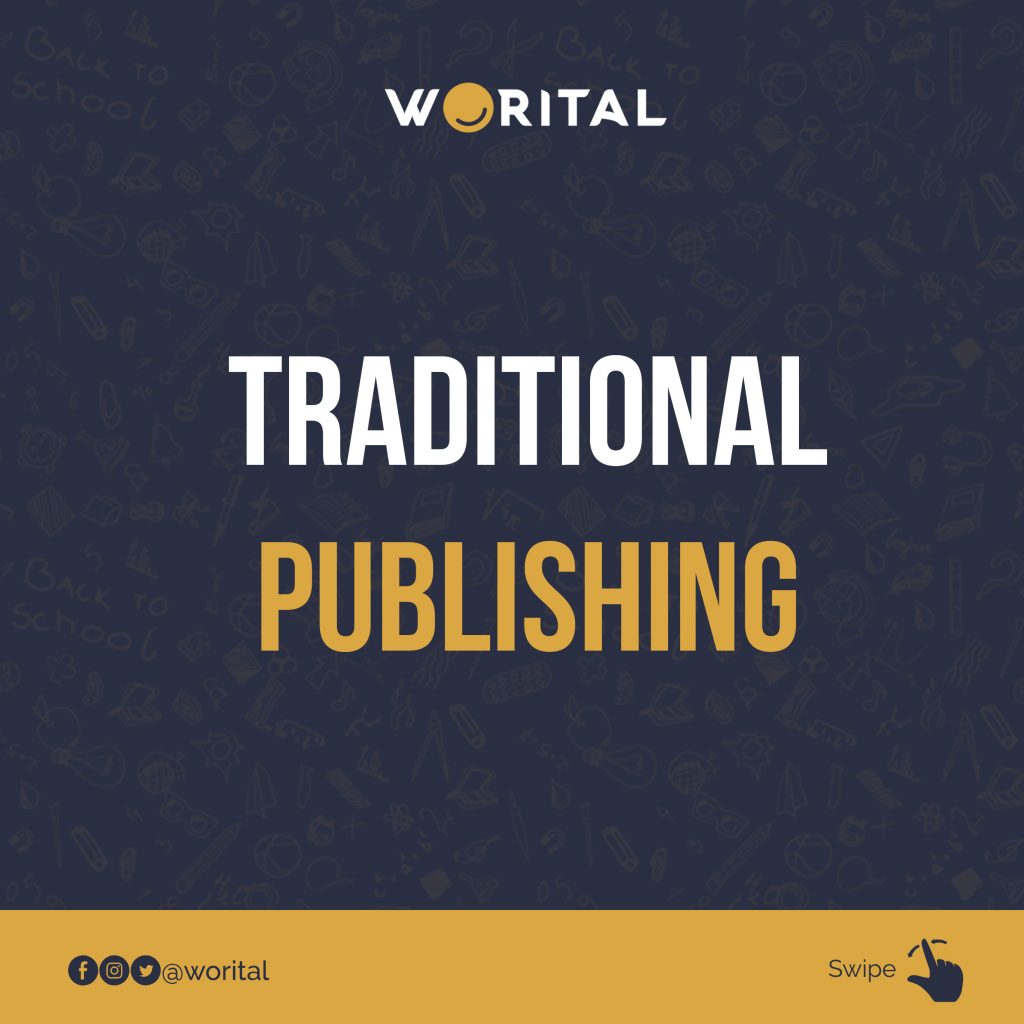Traditional publishing is a mode of publishing that requires that the author surrenders virtually all their rights to ownership of a book to the publisher, in exchange for an advance fee paid to the author in order to secure the book deal.
Here, the book publisher also fully funds the publishing and marketing of the book and also calls the shots on every aspect of the author’s book from cover designs to the number of books should Be initially printed.
It’s important to note that the rate of Authors getting their books published successfully is around a dismal 1%. Thousands of authors get rejected daily alongside their books.
Before we go into the history and to understand the different types of publishing, we should take a look at how publishing itself was birthed, before it innovated into different types.
History of Publishing
Before printing came into existence, written or drawn works were duplicated through a manual process of copying by scribes.
Although no remnants of his work can be found around, Chinese inventor, Bi Sheng created the first movable type of earthenware circa in 1045. The first metal movable earthenware circa was invented by Cho Yun-ni of Korea between 1234 – 1250 AD.
Some centuries later, Joanne Gutenberg created the first type of this machine in Europe in 1450 which kick-started the reduction in the enormous cost of publishing.
The Gutenberg Bible was the first major book printed in Europe with the aforementioned machine.
With the turn of the 1800s came varying publishing models. A publisher could pay for all the cost of publishing your book and we keep hold of the profit from your book up until they make the expected amount from the sales of your book.
On the other hand an author could have out rightly sold the copyright of the book and receive a handsome, one time payment from the purported publisher of their book.
History of Traditional Publishing
Due to modern innovation new categorizations emerged in Publishing and this gave rise to the traditional form of publishing.
Here, selling your copyright to a publisher and publishing your book on a commission arrangement is prevalent.
There is a stringent level of scrutiny even before the author’s manuscript gets to the publisher through adherence to the publisher’s submission guidelines. All these are put in place to mitigate the risk they will take on on a book publishing project.
Also royalties paid to authors are low as they range between 10% to 20%. And the acceptance rate of manuscripts is around 3 out of every 10,000 submissions.
Here are some technical terms in the publishing industry that you should get familiar with.
Binding: the way pages and secured inside the book
Copy editing: the process of fishing out grammatical and spelling errors and grammar inconsistencies
Distributor; the individual or organization that stores your books in a warehouse prepared orders and ships books to retail outlets
Editing: is the process of selecting and preparing written, visual, audible and film medium used to convey information through the process of correction, condensation and organization, with intention of producing a correct consistent accurate and complete output. (source: Wikipedia)
Folio: a single complete page
ISBN: International Standard Book Number
.
Pros of Traditional Publishing
1. You get the support of a literary agent to guide you through the Publishing and marketing process for your book
2. Virtually zero upfront cost payable
3. Greater Network for visibility and reach
4. a built-in publishing team
5. Greater credibility
6. Cash advance, even if the work doesn’t succeed later on
.
Cons of Traditional Publishing
1. Very long publishing process
2. Loss of rights to your book.
3. Technical contracts.
4. Inconsistent paydays
5. Meager royalty rates
6. Less control for you
